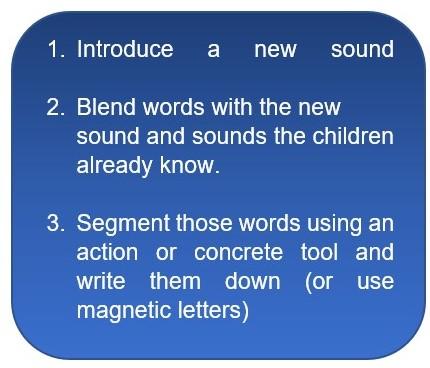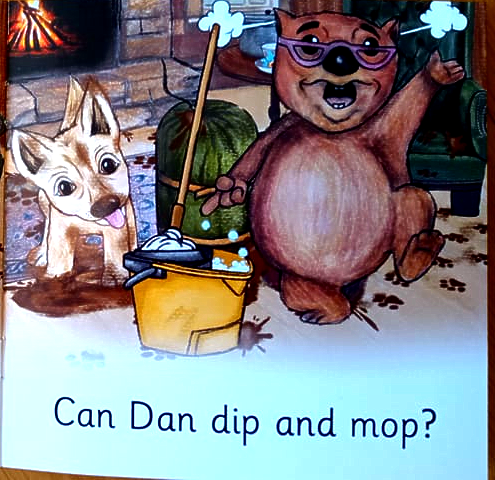An Integrated Approach to Literacy Instruction

This last week I’ve been interviewing teachers for my book, ‘Reading Success in the Early Primary Years: A Teacher’s Guide to Implementing Systematic Instruction’. As well as a summary of the research and in-depth details about how to bring structured literacy to life in your classroom, the book will contain ‘snapshots of practice’ from experienced teachers who have adopted the approach in their classrooms. While these teachers certainly don’t feel like they know it all (who does?), they are far enough down the road that they can reflect on their journey and successes to share information about what and why things are working well. One of the points that has been raised by several teachers is that they now have a much more integrated approach to their literacy blocks. They don’t mean that they are able to teach maths, science and art through the literacy block, but rather that they have far fewer times where there is a clear distinction between ‘reading time’ and ‘writing time’ in skill and concept development. They integrate them.
Dr. Jan Wasowicz recently released her ‘Language Literacy Network’ infographic to help us understand the interconnections between reading and writing in the development of literacy, particularly the reciprocal relationships between decoding and encoding and the advantage of a speech to print approach to instruction. (Note the stronger influence of encoding) This infographic shares many features with Hollis Scarborough’s Reading Rope, however expands on the written word recognition and also includes language expression and word production.

What this graphic and my interviews with wonderful teachers reminds me of is that learning in so many of the components of literacy are stronger when we use an integrated approach. The good news about this is, while it might feel more complex to work from a model such as the one above, teaching in this integrated way is a much more efficient way to get students on the path to proficient reading and writing. Let’s explore what this might look like in your classroom:
Integrated phonics and spelling –It is not necessary to have separate phonics and spelling programs. If you include both encoding and decoding of words with the phoneme/grapheme correspondences you are teaching, children can take advantage of the speech to print advantage of Dr Wasowicz’s model. You can support this by including both recognition and recall of graphemes in your lessons, reading and spelling the same words within the lesson and incorporating exploration of word structure (morphology and orthographic patterns) as you do this work.

Decodable text reading and sentence level transcription – as children read decodable texts in the literacy block, they are internalising oral sentence structure for comprehension. When you take the sentences from decodable texts and use them for supported sentence level transcription work, you are providing a clear connection between reading and writing and using the decodable text as the context for sentence writing. This work can be as simple or as complex as you like and you could easily find yourself reinforcing your previous teaching about conjunctions, vocabulary and parts of speech as you support students to write sentences.
 Image from 'Dan Can' Decodable Readers Australia, Early Reader Level 2, Book 1
Image from 'Dan Can' Decodable Readers Australia, Early Reader Level 2, Book 1
Using rich text as the jumping off point for language comprehension and expression – when you teach the concepts at the top of the model, you don’t do it once for reading and then again for writing. For example, you wouldn’t teach parts of speech in a lesson one week for ‘reading’ and then teach the same lesson a week later for ‘writing’. Introduce the concept once and then include both reading and writing in the same lesson. Your lesson might look like this:
- Read a ‘target’ text that contains strong examples of ‘saying verbs’ (cried, exclaimed, whispered etc).
- Explain the concept of ‘saying verbs’, writing several on the board and displaying one in the concept of a sentence from the text. Explain the impact of the ‘saying verb’ on comprehension.
- Provide further examples in context, outside of the text, engaging students in partner talk as you go.
- Display a picture of something familiar to the students and ask them to talk with their partner about a ‘saying verb’ that could apply to the picture.
- Have partners share responses with the class.
- If students have the appropriate transcription skills, ask them to construct a sentence using their response on a mini-white board or in their books. Provide students who require additional support with appropriate scaffolds to enable them to participate focusing on the concept being developed.
- Have students share their sentences with a partner and the class, asking students to reflect on the impact of the choice of ‘saying verb’ on comprehension of the sentence.
 Passage from Charlotte's Web by E.B. White
Passage from Charlotte's Web by E.B. White
Explore new vocabulary from multiple aspects – When you teach new vocabulary, deconstruct the word in various ways and make them explicit. For example, you might:
- View the word in the context of a sentence from a text you are reading (reading)
- Explore the pronunciation of a word (reading)
- Examine the phonological structure (map its phonemes and graphemes) (writing)
- Discuss the base of the word and any prefixes or suffixes it contains, making spelling and orthographic patterns explicit (reading and writing)
- Explore the meaning, both in context of the text you are reading and in other contexts. For example, ‘table’ can be an item of furniture or a grid used to organise information. (reading and writing)
- Compile a list of synonyms and antonyms, noting any spelling similarities. (reading)
- Have students use the new word in an oral sentence before writing their sentence down. (writing)
- Students read each other’s sentence and draw a picture on their whiteboard of what the sentence means (reading)
There are many ways to integrate reading and writing, decoding and encoding in your literacy block. This saves you time (which I know you don’t have enough of) but more importantly, makes student outcomes stronger.

 Jocelyn Seamer Education
Jocelyn Seamer Education
3 comments
Yes!! I tried explaining to a colleague the spelling/dictation/reading (PLD) as you have discussed but she felt she wasn’t doing her job correctly and in a word- was cheating!!! It just made so much sense and dare I say it…so easy because the children were very successful xx
Thanks Jocelyn such a thorough explanation. Michelle from Smart Spelling spoke about this. If a child does not know the word say 'where' ....look up other words with that digraph and teach through the pattern. Make up a story together where they are engaged in multi sensory experience, writing and talking about and reading all of these wh words. The pattern is exposed through the words and pictures of the nouns that start with wh, the context of the wh story, the discussions, the sounds in the words. There's your literacy done for the day!
Thankyou Jocelyn. I love it when your comments/information confirms my thinking. Your blog posts are gold to me. Thankyou for sharing. Where I live, (rural school, north island, NZ) the schools are reeeeally 'slow' on the uptake of SL, and even in my own school in 2021... but I just soldiered on. I had the foundation class Yr 1-3 and although its taken me most of 2021 to 'get it' (on the job learning). I have seen the benefits and progress, particularly with children who struggled in the past. I could go on and on about it.... Look forward to next blog and the 5 ways to take control of your Literacy Block program.
Leave a comment